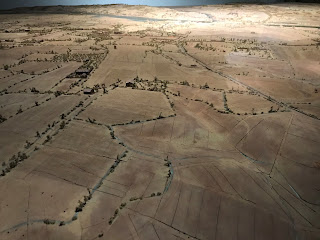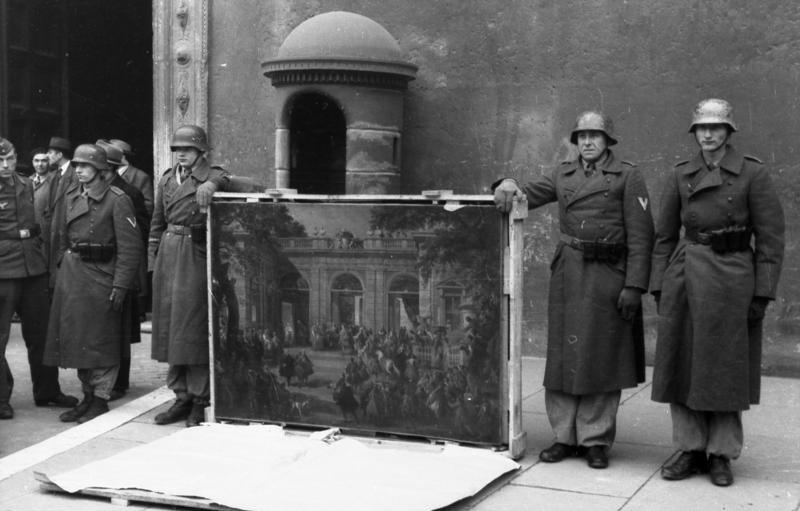The Poetry Foundation website refers to the turn towards realism in Rilke's New Poems (1907).
'The major influence behind this work was Rilke’s association with the famous French sculptor, Auguste Rodin. Working as Rodin’s secretary from 1905 to 1906, Rilke gained a greater appreciation of his work ethic. More importantly, however, the poet’s verses became objective, evolving from an impressionistic, personal vision to the representation of this vision with impersonal symbolism. He referred to this type of poetry as Dinggedichte (thing poems).'There are many 'things' in these poems - in the second part of the book, for example, he writes about a bed, a sundial, a dog, an alchemist, a stylite, a blind man, a prophet and an archaic torso of Apollo (a famous poem that I've referred to here before). How, though, to write about the 'thingness' of a whole landscape? His poem 'Landschaft', which Stephen Cohn translates as 'Townscape' consists of three stanzas, each like a painting. In the first, the 'orange flames of sunset' turn the city into a scene of destruction; in the second, there is a healing and quenching as the sky turns blue; and in the third it is night and the buildings are silent and pale, suddenly illuminated by a shaft of moonlight that resembles the sword of an archangel. The poem that follows 'Townscape' relates to another scene in Italy, but takes a more surprising approach. When you first read 'Roman Campagna', you expect it to describe the emotions of the poet looking at the view or the feelings of somebody present in the landscape. Instead, Rilke take the point of view of the road itself that leads from Rome up into the hills.
Here, to avoid the copyright problem of quoting a whole poem, I've cut the poem in three and provided three different translators' words:
Out of the sluggish, clogged-up city, which
Would rather sleep on, undisturbed, and dream
Of its soaring baths, the road to the fever marsh –
The Appian tomb-road – heads past each last farm
And farmhouse, out under the malign
Gaze of windows that fasten on its back, [...] - Seamus Heaney
[...] as on it goes, wrecking things left and right,
till it is panting, pleading, out of sight,
then quickly lifts its blankness to the vast,
clear sky. [...] - Len Krisack
[...] While it beckons
the aqueducts approaching in the distance,
heaven rewards it with an emptiness
which will outlast it, which will never end. - Stephen Cohn
What interests me here is the way this road actually moves over the course of the poem and is therefore able to convey a sense of landscape. This is obviously quite an extreme form of personification, as the road pants, pleads and glances around itself. But there are often touches of personification in Rilke's poetry - that archaic torso of Apollo, for example, appears to see you and in doing so radiates its stern warning: 'you must change your life'. Years later, in the Sonnets to Orpheus, Rilke wrote a lovely poem about a fountain, which speaks through water brought from the Apennines, into the ear of marble basin. 'Just with herself alone / does she talk this way. And if a jug slips in, / she feels that you are interrupting her.'

































.jpg)





.jpg/1920px-Eug%C3%A8ne_Delacroix_-_Ovide_chez_les_Scythes_(1862).jpg)






